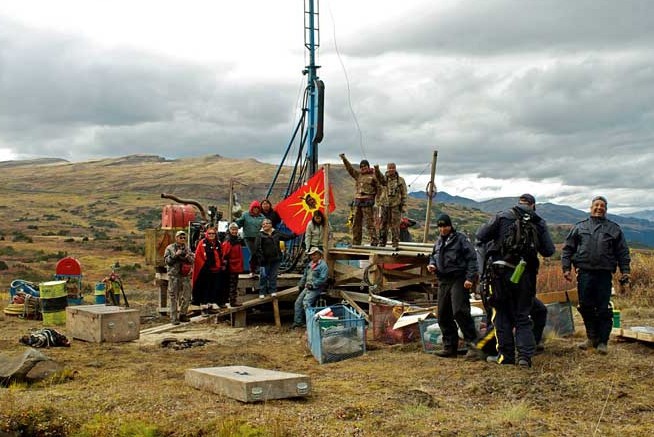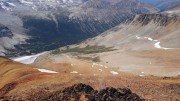Plunging oil prices have cast a gloom over the Canadian economy and added uncertainty to pipeline battles and how to best work with Canada’s indigenous peoples on resource extraction projects of all kinds.
There is at least general agreement on one point: the old ways of doing business are over. This is due to the Supreme Court of Canada’s Tsilhqot’in ruling in June 2104, which affirmed that consent consultation is “not merely a right of first refusal with respect to Crown land management or usage plans. Rather, it is a right to proactively use and manage the land.”
The challenge seems to be in understanding what Canada’s indigenous peoples want, and how to work with them to meet their needs.
A good place to start is by absorbing the Tsilhqot’in ruling statement that aboriginal title is “collective title held not only for the present generation but for all succeeding generations. This means it cannot be alienated except to the Crown or encumbered in ways that would prevent future generations of the group from using and enjoying it. Nor can the land be developed or misused in a way that would substantially deprive future generations of the benefit of the land.”
Understanding this principle is crucial to seeing the way forward being offered by a growing number of indigenous communities who are taking the initiative to hasten the end of others making and imposing all the regulations by creating “on-the-land” solutions to accompany the increasing body of indigenous policies and laws.
On-the-land programs can be used to ensure areas are protected for their natural bounty, beauty and environmental importance, or that resource development areas are worked with great planning and care, and properly monitored and controlled.
They involve various versions of an indigenous rangers program, also sometimes referred to as “guardians,” and in the case of a recent initiative by the Northwest Territories’ Deh Cho Watchmen, under which indigenous communities themselves would patrol, monitor and protect the land on behalf of their peoples.
This makes perfect sense. Who better to do this than the people who live on the land, have countless generations of traditional knowledge about it, and whose lives are tied to it?
This is not an untested notion. One only has to look to the iconic military Arctic Rangers, made up mostly of indigenous people, many of whom serve for decades and even into their seventies to use their knowledge and skills to monitor and protect Canada’s Far North.
The rest of the world is already paying attention to indigenous leadership in protecting the globally important Canadian boreal forest. It was one focus at the recent World Parks Congress in Australia — a country that has its own impressive indigenous protected areas and ranger programs.
Delegates heard first-hand about the First Nations in Northern Manitoba and their work with the provincial government to protect and manage the pristine Pimachiowin Aki as a World Heritage Site; the achievements of Cree Nation of Eye Itched in Quebec; and the advanced plans by the N.W.T.’s Lutsel K’e First Nation to create the Thaidene Nene National Park Reserve.
But the list is much longer. And one of the biggest driving forces to this powerful leadership by Canada’s indigenous peoples is mining — particularly in mostly treaty-less B.C., where long-running battles have given many communities a head start over those now struggling to deal with existing and proposed oil pipelines.
Their solutions have been given impetus by a slew of environmental and legal victories. For example, shortly before their Supreme Court victory, the Tsilhqot’in saw the federal Conservative government reject for a second time Taseko Mines’ Prosperity/New Prosperity mine proposal in B.C.
And then in August, the collapse of Imperial Metals’ Mount Polley mine tailings pond in neighbouring Shuswap territory highlighted the weakness of the B.C. mining regime and the accuracy of First Nation warnings of the excessive risks being taken.
The Tsilhqot’in are now establishing a tribal park to ensure the areas where the twice-rejected massive New Prosperity open-pit mine won’t be built, and are working on a mining policy.
And four North Shuswap First Nations affected by the Mount Polley breach have released an incredibly thorough, detailed and meticulously researched mining policy and implementation tool kit.
On-the-land stewardship programs seem to be the next logical step in implementing the policy and tool kit.
Of course, if government and industry want continued confrontation, they could follow the never-give-an-inch lead of the Yukon government. It lost its legal battle to preserve claim-staking without First Nations consultation, but has not responded well. Its bid to open up the Peel Watershed to mining has just been overturned, but it is appealing that verdict. And it is infuriating First Nations and others with arbitrary changes to the environmental assessment process. Even miners are starting to call for an end to this confrontational approach.
However, if the goal is to achieve genuine, mutually beneficial partnerships with First Nations, a better resolution for 2015 would be to approach such initiatives as solutions and opportunities, not obstacles.
— Based in Happy Valley-Goose Bay, Labrador, Valérie Courtois is the director of the Indigenous Leadership Initiative for the International Boreal Conservation Campaign. She is a professional forester who specializes in indigenous issues, forest ecology and ecosystem-based management and planning. She is a member of the Innu community of Mashteuiatsh in Quebec’s Lac-Saint-Jean region, and can be contacted at vcourtois@borealcanada.ca.






The way gov and Indians scare away investment we will all be living off the land like we did 100 yrs ago
Larry j salo
Prospector